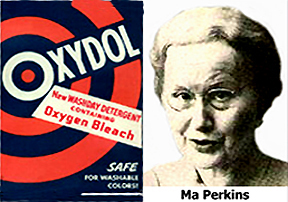One of the most listened to area radio programs between 1960 and 1966 was “Hap’s House,” a creation of WBEJ Radio in Elizabethton.
“Hap” Harold Henley, alias Ziggy Ziggy Higginbotham, was a popular comedic deejay with a weekday morning eight to noon broadcast. The five-foot five-inch slightly stocky DJ beckoned his faithful listeners to their radios with “good listening, laughs galore and toe tappin’ tunes,” according to an old promotional “Wanted” poster. Those of us who remember his lively program further recall that his favorite recording artist was Elvis.
Cleo Reed, longtime general manager of the station fondly recollects the jovial entertainer: “During a broadcast, Hap put a record on the turntable and played it over and over. I went upstairs to see what was going on. He told me he was going to keep playing that song until people started calling the station. He wanted to see how many people were listening to his program. About that time, the phone began ringing off the wall.”
Given that one of his sponsors was a shoe store, Hap appropriately used as his daily theme song an instrumental recording, “Red Shoes.”
Ms. Reed recalled that the witty disc spinner once conducted a “Man on the Street” program at 12:15 pm in downtown Elizabethton in front of Parks Belk. Hap wore a bright red hard hat, interviewed people and awarded them sponsors’ prizes. The red hat is currently on display at the station’s new location at 510 Broad Street.
Cleo commented with fondness on Hap’s annual Santa Claus program, asking children or their parents to send letters to the station, receiving between 150 and 200 responses. The clever announcer would then attempt to reach Santa at the North Pole with words like “Calling Santa Claus; come in Santa” and adding line static and wind gust sound effects to achieve even more realism. After reaching the jolly old man, the DJ switched roles. He imitated Santa by sticking his head into a metal waste can, containing a microphone surrounded by several wadded up papers and reading the youngster’s letters over the air. The kids loved it.
Smithdeal’s Supermarket sponsored a cooking segment on Hap’s House at 10:00 each morning. Hap gave clues to secret recipes and called two fortunate listeners to see if they could identify the gastronomic delight. Prize money often exceeded $100.
Hap had suffered terrible burns in a plane crash in World War II. Ms. Reed recalled that he was very regimented in his life activities, such as eating a thermos bottle of pea soup and a can of sardines for lunch every day. Hap was a perfectionist. He kept a huge unabridged dictionary 8” thick in the control room with him. Lynn Williams, former station engineer, located a second large dictionary at a book sale and purchased it for his friend.
Cleo summed up her feelings for her former good friend with these succinct words: “If you ever met the man, you would remember him forever.” After working at the station for six years, the well-liked radio entertainer died in October 1966 after a 13-week lingering illness. He was about 52.
The door of Hap’s House at 1240 WBEJ was closed and locked forever; Hap Harold Henley, alias Ziggy Ziggy Higginbotham, had left the building.



